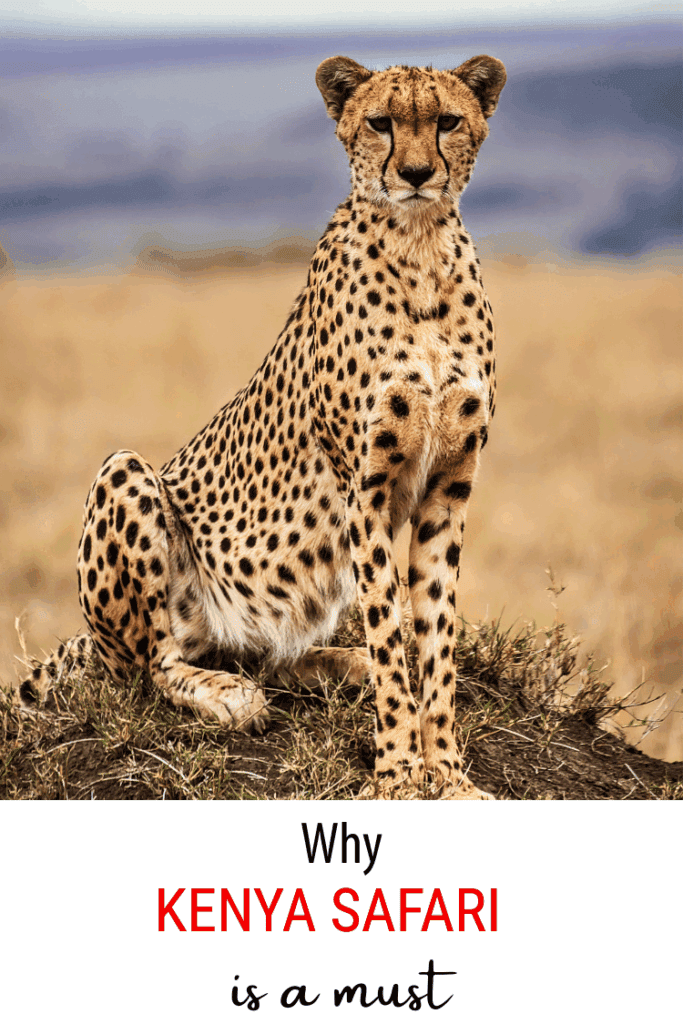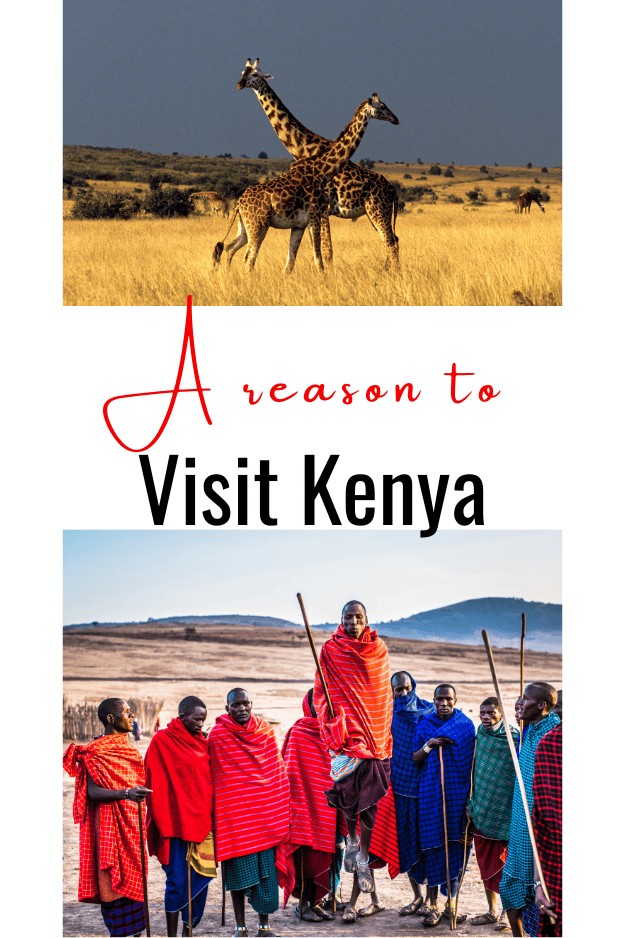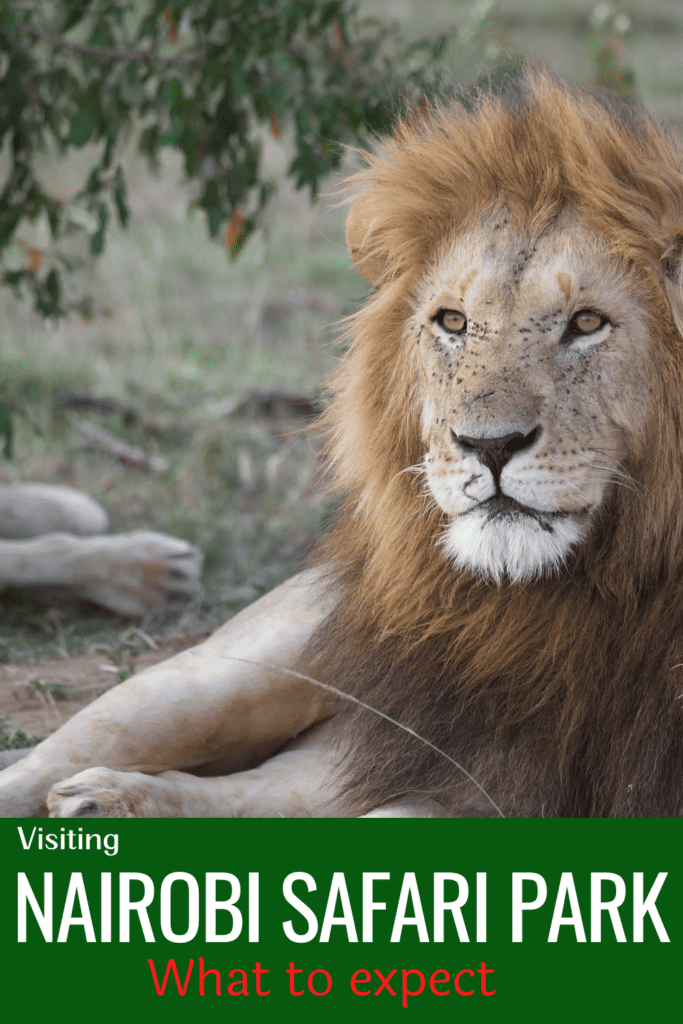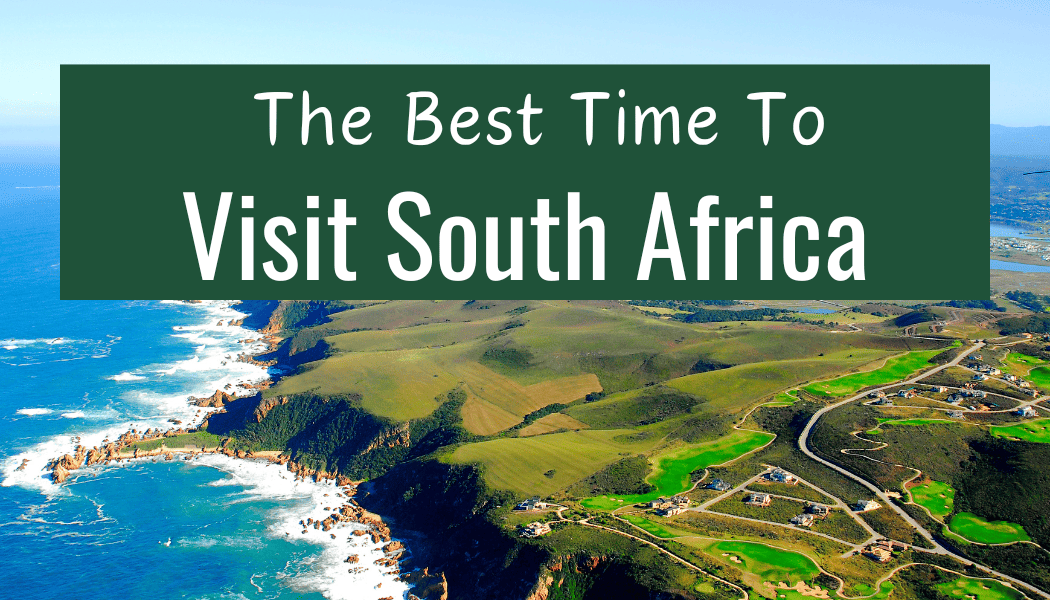Kenya offers one of Africa’s most complete travel experiences, combining world-class wildlife viewing with stunning beaches and rich cultural encounters.
Yes, Kenya is absolutely worth visiting – it delivers exceptional safari adventures, breathtaking landscapes, and incredible value for your money.
From the famous wildebeest migration to pristine coastal retreats, this East African destination provides something for every type of traveler.
You’ll discover why Kenya stands out as a premier safari destination, where you can witness the Big Five and experience one of nature’s greatest spectacles.
The country’s diverse landscapes span from the iconic savannas of the Maasai Mara to the crystal-clear waters of the Indian Ocean coastline.
Beyond the wildlife and scenery, Kenya offers authentic cultural experiences and practical advantages that make it an ideal choice for both first-time visitors to Africa and seasoned travelers.
Understanding what to expect and how to plan your trip will help you make the most of this remarkable destination.
You may like
Why Kenya Is Worth Visiting
Kenya stands out as one of Africa’s most complete travel destinations, offering world-class safaris.
Stunning landscapes from mountains to beaches, vibrant cultures such as the Maasai, and adventures ranging from hiking to diving.
Unique Safari Experiences
Kenya ranks among the world’s top safari destinations in East Africa.
The country hosts the famous Great Wildebeest Migration, where over two million animals migrate between Kenya and Tanzania each year.
You can spot Africa’s Big Five animals in Kenya’s national parks. These include lions, elephants, rhinos, leopards, and buffalo.
The Maasai Mara National Reserve offers some of the best wildlife viewing on the continent.
Kenya has more than 50 national parks and reserves. Each park offers different kinds of animals and landscapes.
Tsavo National Park is perfect for seeing large elephant herds. Amboseli National Park gives you views of Mount Kilimanjaro while watching wildlife.
Top Safari Parks in Kenya:
- Maasai Mara National Reserve
- Tsavo East and West National Parks
- Amboseli National Park
- Lake Nakuru National Park
- Samburu National Reserve
Most safari tours in Kenya provide expert guides. These guides know animal behavior and the best spots for animal photography.
Check out this post on the best cameras for wildlife photography.
You can choose from budget camping trips to luxury lodge stays.
Natural Wonders and Landscapes
Kenya’s landscapes change dramatically across the country. You can visit tropical beaches, snow-capped mountains, and vast grasslands all in one trip.
The Indian Ocean coastline stretches for 300 miles. Diani Beach has won awards for its white sand and clear water. You can swim, snorkel, or try water sports here.
Mount Kenya is Africa’s second-highest mountain at 17,057 feet. You can hike to the peaks or explore the forests around the base. The Great Rift Valley cuts through Kenya with lakes, hot springs, and volcanic craters.
Kenya’s Diverse Landscapes:
- Coastal beaches – Diani, Watamu, Malindi
- Mountains – Mount Kenya, Mount Longonot
- Lakes – Lake Nakuru, Lake Naivasha, Lake Victoria
- Deserts – Chalbi Desert, Northern Kenya
Lake Nakuru turns pink from millions of flamingos. Lake Naivasha has hippos and hundreds of bird species.
The landscapes provide perfect backdrops for photos and outdoor activities.
Rich Cultural Heritage
Kenyan people represent over 40 different ethnic groups. Each group has its own language, traditions, and customs.
This diversity creates a rich cultural experience for visitors.
The Maasai culture is one of Kenya’s most famous. The Maasai people are known for their bright red clothing, jumping dances, and Nomadic lifestyle. You can visit Maasai villages to learn about their traditions.
Swahili culture dominates Kenya’s coast. This culture blends African, Arab, and Indian influences.
You can see this mix in the architecture, food, and music of coastal cities like Mombasa.
Cultural Experiences in Kenya:
- Traditional Maasai village visits
- Swahili cooking classes
- Local craft markets
- Traditional music and dance shows
- Historical sites and museums
Many communities welcome visitors to learn about their daily lives.
You can try traditional foods, buy handmade crafts, and participate in cultural ceremonies.
Diverse Outdoor Adventures
Kenya offers adventures beyond traditional safaris. The varied landscapes create opportunities for many outdoor activities throughout the year.
You can climb Mount Kenya’s peaks or hike through its bamboo forests. Mount Longonot offers easier day hikes with crater views.
The Aberdare Mountains have waterfalls and dense forests to explore.
Water sports thrive along Kenya’s coast. You can go deep-sea fishing, scuba diving, or kitesurfing.
Lake Naivasha and Lake Victoria offer freshwater activities such as boat rides and fishing.
Adventure Activities Available:
- Mountain climbing and hiking
- White-water rafting
- Hot air balloon rides over the Maasai Mara
- Camel trekking in northern Kenya
- Snorkeling and diving on coral reefs
The climate allows for year-round outdoor activities. Different regions have different weather patterns, so you can always find good conditions somewhere in the country.
Wildlife and Safari Highlights
Kenya stands out as Africa’s premier safari destination with over 50 national parks protecting the Big Five and countless other species.
The country’s diverse ecosystems support year-round wildlife viewing opportunities alongside world-class conservation programs.
The Big Five and Iconic Animals
You’ll find all members of the Big Five in Kenya’s national parks and reserves. Lions roam the savannas of Masai Mara and Amboseli in large prides.
Elephants gather in massive herds, particularly in Amboseli National Park and Tsavo East.
Leopards hunt throughout Kenya’s parks, though they’re harder to spot due to their secretive nature.
Buffalo move in huge herds across the grasslands. Black rhinos, though endangered, can be seen in protected conservancies.
Beyond the Big Five, you’ll encounter cheetahs racing across open plains at speeds up to 70 mph. Massive herds of zebras and wildebeests create stunning scenes during migrations.
Antelopes like gazelles bound through the grasslands in large numbers.
Crocodiles lurk in rivers and lakes throughout Kenya’s parks. Giraffes tower above acacia trees, feeding on leaves other animals can’t reach.
World-Renowned Safari Parks
The Maasai Mara National Reserve
offers the best wildlife density in Kenya. The Great Migration brings over 1.5 million wildebeests and zebras here between July and October.
I can confidently say the Maasai Mara is the most popular national park in Kenya.
Amboseli National Park provides clear views of Mount Kilimanjaro and large elephant herds. You’ll see over 1,000 elephants living in this park.
Tsavo East National Park covers 13,747 square kilometers, making it one of Kenya’s largest parks. Red elephants covered in dust are a unique sight here.
Samburu National Reserve protects species you won’t find elsewhere in Kenya. These include reticulated giraffes, Grevy’s zebras, and Beisa oryx.
All these have world-class safari lodges to meet your safari needs.
| Park | Best Wildlife | Size (km²) |
|---|---|---|
| Masai Mara | Big Five, Migration | 1,510 |
| Amboseli | Elephants, Lions | 392 |
| Tsavo East | Elephants, Buffalo | 13,747 |
| Samburu | Rare Species | 165 |
Conservation Efforts
Kenya leads Africa in wildlife conservation through community-based programs.
Local Maasai communities work directly with conservancies to protect wildlife habitats.
Anti-poaching units patrol parks 24/7 to protect rhinos and elephants from illegal hunting.
Kenya burned 105 tons of ivory in 2016 to show its commitment against poaching.
Your safari fees directly fund these conservation efforts. Private conservancies around the Maasai Mara protect 180,000 hectares of an additional wildlife habitat.
Kenya’s conservancy model gives local communities income from tourism instead of farming or livestock.
This approach has increased wildlife populations in many areas.
Best Time for Wildlife Viewing
Dry season (June to October)
offers the best wildlife viewing conditions. Animals gather around water sources, making them easier to spot.
The Great Migration reaches Maasai Mara between July and October. You’ll see dramatic river crossings where crocodiles wait for wildebeests and zebras.
Wet season (November to May) brings newborn animals and lush landscapes. Many predators give birth during this time, creating active hunting scenes.
Bird watching peaks during the wet season when migratory species arrive from Europe and Asia. Over 1,000 bird species live in Kenya year-round or seasonally.
Calving season occurs from January to March when wildebeests give birth on the Serengeti plains before moving north to Kenya.
The Great Migration Experience
The Great Migration brings over 1.5 million wildebeest, zebras, and gazelles through Kenya’s Masai Mara each year.
This natural spectacle features dramatic river crossings, seasonal movements, and intense predator-prey interactions.
Witnessing the Mara River Crossing
The Mara River crossing stands as the most dramatic moment of the great wildebeest migration.
Thousands of wildebeest gather at the river banks, hesitating before plunging into the crocodile-filled waters.
You’ll witness pure chaos as animals leap from steep banks into the rushing water. The strongest swimmers make it across while others struggle against the current.
Nile crocodiles wait in the water, creating life-and-death drama. These massive predators can grow up to 20 feet long and strike without warning.
The crossing happens multiple times during the migration season. Animals may cross back and forth between Kenya and Tanzania’s Serengeti National Park several times.
Best viewing spots include:
- Lookout Hill
- Paradise Plains
- Sand River area
Early morning crossings offer the best photography light. You should arrive at crossing points by 6 AM for prime positioning.
Migration Seasons and Routes
The great migration follows a predictable yearly pattern between Tanzania’s Serengeti and Kenya’s Maasai Mara. Animals move in search of fresh grass and water sources.
July to October marks peak season in the Masai Mara. Herds arrive from the Serengeti during this period seeking greener pastures.
The migration includes:
- 1.5 million wildebeest (the majority)
- 400,000 zebras
- 200,000 gazelles
Animals enter the Mara through the Bologonja and Sand River areas. They spread across the reserve’s 580 square miles of savanna.
Weather patterns drive the movement. The animals follow rainfall and grass growth cycles that have remained unchanged for thousands of years.
Tour operators at the game parks know the best spots where wild animals can be photographed and viewed best from the safety of a safari vehicle.
I`d highly recommend tour operators over going on a private safari.
November to June sees herds return south to Tanzania. They follow ancient routes passed down through generations.
Wildlife Drama and Predators
The massive herds attract Africa’s most dangerous predators to the Masai Mara.
This concentration creates non-stop hunting action throughout the migration period.
Lions form the primary threat on land. Mara prides can have 20-30 members during migration season. They target weak, young, or separated animals.
Leopards hunt at night and drag kills into trees. You’ll spot them resting on acacia branches during daylight hours.
Cheetahs use their speed advantage on open plains. They prefer gazelles and young wildebeest for easier takedowns.
Spotted hyenas work in packs of 15-20 animals. These powerful scavengers steal kills from other predators and hunt independently.
The Mara River adds another layer of danger. Crocodiles position themselves at traditional crossing points where they’ve hunted for decades.
Vultures circle overhead, cleaning up remains. This natural cleanup system prevents disease and maintains the ecosystem’s balance.
Breathtaking Landscapes and Natural Wonders
Kenya offers stunning mountain peaks, massive lakes, and views of Africa’s tallest mountain.
The country sits along the equator and features diverse landscapes from snow-capped peaks to alkaline lakes that are filled with flamingos.
Mount Kenya and Trekking Adventures
Mount Kenya stands as Africa’s second-highest mountain at 17,057 feet. You can climb this extinct volcano through three main routes: Sirimon, Naro Moru, and Chogoria.
The mountain features three main peaks: Batian, Nelion, and Point Lenana. Most trekkers aim for Point Lenana since it requires no technical climbing skills.
You’ll pass through five distinct climate zones during your climb. The journey starts in farmland and moves through bamboo forests, alpine moorlands, and finally reaches the ice-covered peaks.
The trek typically takes 4-6 days, depending on your chosen route. The Chogoria route offers the most scenic views with tarns and gorges. The Sirimon route provides the gentlest ascent.
Wildlife includes elephants, buffalo, and various antelope species in lower zones. Above 10,000 feet, you might spot rock hyrax and unique alpine plants.
The Great Rift Valley and Its Lakes
The Great Rift Valley cuts through Kenya from north to south, creating a chain of lakes with unique characteristics.
This geological wonder formed millions of years ago when tectonic plates separated.
Lake Turkana in the north is the world’s largest desert lake. Its jade-green waters support crocodiles and diverse fish species.
Lake Naivasha is a freshwater lake perfect for boat rides and hippo watching. The surrounding area features flower farms and geothermal activity.
Lake Nakuru attracts millions of flamingos that turn the shoreline pink. The alkaline waters provide ideal conditions for the algae that flamingos eat.
Lake Bogoria features hot springs and geysers along its shores. Steam rises from the ground while flamingos feed in the shallow waters.
Lake Victoria, Africa’s largest lake, forms Kenya’s western border. You can visit fishing villages and take boat trips to see local island communities.
Amboseli and Kilimanjaro Views
Amboseli National Park offers Kenya’s best views of Mount Kilimanjaro across the border in Tanzania. The snow-capped peak rises 19,341 feet above the savanna.
Early morning provides the clearest mountain views before clouds form. You can photograph elephants walking with Kilimanjaro in the background.
The park’s swamps attract large elephant herds year-round. These wetlands stay green even during dry seasons, creating perfect wildlife viewing conditions.
Observation Hill gives you panoramic views of the entire park and mountain. The short climb takes about 30 minutes and works well for sunset viewing.
Amboseli’s flat terrain and sparse vegetation make wildlife spotting easy. You’ll see lions, cheetahs, zebras, and over 400 bird species against the mountain backdrop.
I must admit it is hard to choose when going for an African safari, every national park has something different to offer.
Coastline and Beach Getaways
Kenya’s 536-kilometer Indian Ocean coastline offers some of Africa’s most beautiful beaches, with world-class beach resorts featuring white sand shores, coral reefs, and rich marine life.
The coast combines beach relaxation with cultural experiences and water sports activities.
Diani Beach and White Sands
Diani Beach stands as Kenya’s most famous coastal destination. Located 30 kilometers south of Mombasa, this south coast beach stretches for several kilometers along the Indian Ocean.
The beach features powdery white sand and crystal-clear turquoise waters. Palm trees line the shore, creating perfect shade for relaxation.
You can enjoy various water sports here. Snorkeling and diving are popular due to the nearby coral reefs.
The reefs protect marine life, including tropical fish and sea turtles.
Accommodation options range from luxury resorts to budget-friendly hotels. Many beachfront properties offer direct access to the sand.
The area also provides cultural experiences. You can visit local villages and learn about Swahili traditions.
Traditional dhow boat trips are available for exploring the coastline.
Mombasa and Historical Charm
Mombasa combines beach access with rich historical significance. This coastal city serves as Kenya’s main port and second-largest urban center.
Nyali Beach and Bamburi Beach are the main coastal areas near Mombasa. These beaches offer developed facilities with restaurants, hotels, and water sports equipment rental.
The city’s Old Town showcases centuries of cultural influence. You can explore narrow streets filled with Swahili architecture, Arab influences, and colonial buildings.
Fort Jesus, built by the Portuguese in 1593, stands as a major historical attraction.
This UNESCO World Heritage site overlooks the harbor and contains museums about the region’s past.
Mombasa’s location makes it an ideal base for coastal exploration. You can easily access other beaches while enjoying urban amenities and cultural sites.
Watamu and Marine Life
The northern coastal island of Lamu offers exceptional marine experiences along Kenya’s coast. This small town sits about 120 kilometers north of Mombasa.
Watamu Marine National Park protects coral reefs and diverse sea life. The park covers both water and beach areas, making it perfect for snorkeling and diving.
You can spot dolphins, whale sharks, and sea turtles in these waters. The coral reefs support hundreds of fish species with vibrant colors.
The beach itself features white sand and calm waters. Coconut palms provide natural shade along the shoreline.
Bio-Ken Snake Farm and Gede Ruins offer land-based attractions near Watamu. These sites add cultural and educational value to your beach visit.
Other Top Coastal Destinations
Kilifi
provides a quieter coastal experience north of Mombasa. The town sits on Kilifi Creek, offering both ocean and creek-side beaches.
Kilifi is the perfect place for those who prefer a quieter vacation.
Lamu Island represents Kenya’s most authentic coastal culture. This UNESCO World Heritage site maintains traditional Swahili architecture and car-free streets.
Chale Island offers an exclusive getaway experience. This private island features luxury accommodations and pristine beaches.
Malindi combines Italian colonial history with beautiful beaches. The town attracts visitors seeking both relaxation and cultural exploration.
These destinations offer lower prices and provide alternatives to more crowded beach areas frequented by avid travelers while maintaining high-quality coastal experiences for anyone interested in a beach holiday.
Kenya’s Cultural Diversity
Kenya is home to over 40 different ethnic groups, each with unique languages, traditions, and customs.
The Maasai people offer some of the most recognizable cultural experiences.
While other communities across the country provide warm hospitality and diverse perspectives on Kenyan life.
Maasai Traditions and Communities
The Maasai are one of Kenya’s most famous ethnic groups.
You can easily recognize them by their distinctive red shukas (traditional clothing) and their strong warrior culture.
The Maasai have maintained their traditional way of life for centuries.
They are semi-nomadic people who move with their cattle in rural areas across the savannahs.
Cattle are central to Maasai culture and represent wealth and status.
When you visit Maasai communities, you can learn about their traditional practices.
These include jumping dances, beadwork, and age-old ceremonies. Many Maasai villages welcome visitors and share their customs.
Traditional Maasai Elements:
- Red ochre body paint and jewelry
- Circular mud and stick houses called manyattas
- Complex age-set social systems
- Traditional herbal medicine practices
The Maasai also have deep connections to Kenya’s wildlife areas. Many work as guides and conservationists in national parks and reserves.
Other Ethnic Groups and Kenyan Hospitality
Beyond the Maasai, Kenya has dozens of other ethnic communities. The Kikuyu are the largest group and are known for their farming skills and business abilities.
The Luo people live around Lake Victoria and are famous for their fishing traditions and music.
The Luhya community consists of several sub-groups with rich oral traditions and cultural festivals.
Major Kenyan Ethnic Groups:
- Kikuyu – Largest group, skilled farmers and entrepreneurs
- Luo – Fishing culture, strong musical traditions
- Luhya – Multiple sub-groups, rich storytelling culture
- Kamba – Known for wood carving and crafts
- Kalenjin – Famous for producing world-class runners
Kenyan people are known for their warm hospitality regardless of their ethnic background.
You will find that most communities welcome visitors with genuine friendliness.
This hospitality extends from busy city markets to remote rural villages.
Each group speaks its own language while also using Swahili and English.
This creates a rich blend of cultures that you can experience through local foods, crafts, music, and festivals throughout your visit.
Practical Tips for Visiting Kenya
Kenya requires specific planning around seasons, health requirements, and entry procedures. Your trip’s success depends on timing your visit right and handling visa requirements properly.
Best Time to Travel
Kenya has two main seasons that affect your travel experience. The dry season runs from June to October and from December to March.
June to October offers the best wildlife viewing. This period covers the Great Migration in the Masai Mara from July to September. Animals gather around water sources, making them easier to spot.
December to March provides warm, dry weather perfect for beach visits and outdoor activities. Temperatures stay comfortable for safaris and city exploration.
The rainy seasons happen from April to May and November. April and May bring heavy rains that can make roads impassable. Many lodges close during this time.
November has short rains that are less disruptive. You might get good deals on accommodations, but the weather can be unpredictable.
Travel Safety and Health
You need several vaccinations before traveling to Kenya. Yellow fever vaccination is required if you’re coming from certain countries.
Get hepatitis A, hepatitis B, and typhoid shots at least 4-6 weeks before travel.
Malaria exists in most parts of Kenya except high-altitude areas like Nairobi. T
ake anti-malarial medication as prescribed by your doctor. Use insect repellent and sleep under nets.
Drink only bottled or boiled water. Avoid ice cubes, raw vegetables, and street food unless you’re sure about preparation methods.
Keep copies of important documents separate from originals. Register with your embassy when you arrive.
Travel Logistics and Entry Requirements
Most visitors need a visa to enter Kenya. You can apply online through the eVisa system or get one at the airport. The process takes 2-7 business days online.
Your passport must be valid for at least 6 months from entry date. You need at least two blank pages for stamps.
Entry Requirements:
- Valid passport
- Visa (for most nationalities)
- Yellow fever certificate (if required)
- Return ticket proof
- Accommodation details
The main airport is Jomo Kenyatta International Airport in Nairobi. Flights from major cities worldwide connect here.
Local currency is the Kenyan Shilling. ATMs are available in cities and towns. Credit cards work in hotels and restaurants, but carry cash for small vendors.
Karibu Kenya








